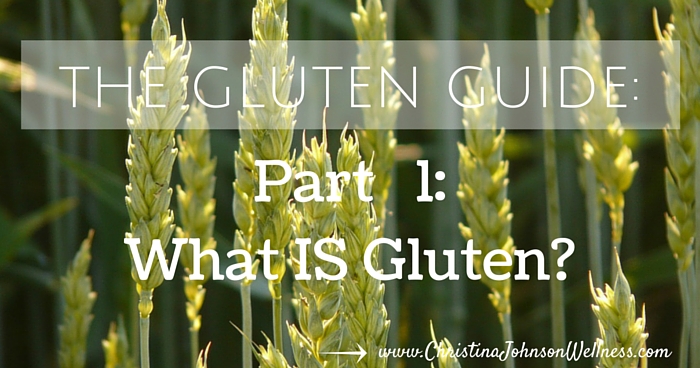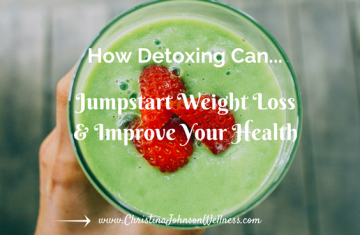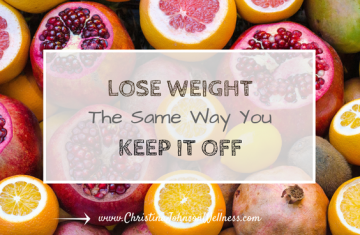Gluten. We hear all about it these days, but I find that people have more questions than answers when it comes to this topic.
For example, some of the questions I commonly hear are things like: What exactly is gluten? Why, all of a sudden, are there so many people who are going gluten free? Should I be gluten free? Is this whole thing just a fad? Is it actually dangerous to avoid gluten? If I want to avoid gluten, where do I even begin?
It can be difficult to sift through the all of the conflicting answers and opinions to these questions. So I’ve created a complete guide to gluten that will explain the facts about what gluten actually is, the effect gluten has on our bodies, and how to tell whether or not you should avoid gluten.
After reading this series of 4 posts, you will have enough factual information to decide whether or not gluten should be part of a healthy diet for you. And, if you decide that it would be best for you to avoid gluten, I will also give you some practical steps that you can take to go gluten free.
Now, before you think that this topic doesn’t apply to you, consider this statistic from the National Foundation for Celiac Awareness [1]:
It is estimated that 83% of Americans who have celiac disease are undiagnosed or misdiagnosed with other conditions.
That’s a lot of people whose bodies do not tolerate gluten, but they aren’t aware of it! As a result, many people are suffering without understanding why or knowing what to do about it. It is my mission to provide this information to you in a way that makes sense so that you can understand what’s going on in your body.
So, how about we clear up some of the confusion and get to the bottom of this issue? In this first of four posts in the Gluten Guide, we’ll get started by making sure you have a basic understanding of what gluten is, where it’s found, what celiac disease is, and what non-celiac gluten sensitivity is.
What is Gluten?
Gluten is a combination of two proteins that are naturally found in wheat, rye, and barley. Gluten tends to act like a glue that holds ingredients together, and it is what gives baked goods a chewy texture and helps them stay moist.
Where Is Gluten Found?
These days, gluten truly seems to be found almost everywhere! Some of the foods that it is most commonly found in are:
-
- Baked goods
-
- Cereal
-
- Pasta
-
- Crackers
-
- Sauces and gravies
-
- Salad dressings
-
- Alcohol
- Soy sauce
Did you know, though, that gluten can actually be found in things other than food? For example, other common sources of gluten include:
-
- Cosmetics
-
- Shampoos and conditioners
-
- Vitamins and mineral supplements
-
- Medications
-
- Toothpaste
- Soaps
These lists are definitely not exhaustive of all sources of gluten (and I’ll show you some of the hidden sources of gluten in a later post in this series), but they do give you a general idea of the types of things it may be commonly found in.
Do I Need to Eat Gluten Containing Grains to be Healthy?
Several people have told me that they have heard that it is “dangerous” to go gluten free unless you have celiac disease.
From what I can gather from people who have heard this, the main objections to going gluten free usually fall into the following three categories:
- You should not exclude an entire food group from your diet.
- You won’t get enough fiber without eating gluten.
- You will miss out on important nutrients if you don’t eat gluten containing grains.
Luckily, gluten is a topic that has been researched and talked about extensively in the past few years, so we can find solid answers to these points. Katie at wellnessmama.com [2] has a well-researched article that addresses these three objections to avoiding gluten. I’ll summarize her main findings here:
-
- Gluten by itself is not a food group, so by eliminating gluten we are not eliminating an entire food group. Gluten is found in many grains (such as wheat, rye, and barley), but there are also several other grains that do not contain gluten (such as buckwheat, rice, and quinoa). Therefore, you can avoid gluten, but still eat some grains if you choose to do so.
-
- Some people believe that grains are necessary in order to get in as much fiber as you need on a daily basis. However, the insoluble fiber that is found in grains can actually be irritating to your digestive system. The solution? Get your fiber from fruits and vegetables! Fruits and vegetables are a great source of fiber, and you can definitely get in all of the fiber you need if you eat a variety of fruits and vegetables throughout the day.
- I have also heard from people that you will be missing out on valuable vitamins and minerals if you avoid eating gluten. The fact is, though, that all of the vitamins and minerals that are found in grains are also found in fruits, vegetables, and meat. And, more often than not, higher amounts of the nutrients are actually found in fruits, vegetables, and meat when compared with grains.
So, the short answer to the question, do I need to eat gluten in order to be healthy, is no. Through all of the research I have done thus far, I have not found one fact-based and research-supported reason to believe that we must eat gluten or that it is dangerous to avoid it.
Why is Gluten Such a Big Problem Now?
I think we can all agree that the idea of going gluten free has truly exploded in the last few years. So, you might be asking yourself, if gluten really does cause this much harm, why hasn’t it always been this big of an issue? A few facts will provide us with an answer to this question.
First of all, traditional wheat is vastly different from modern wheat. In fact, modern wheat was only introduced to us around the year 1960. At this time, scientists genetically manipulated the traditional wheat plant in order to create wheat that would produce higher yields at less of a cost. So the wheat from 60 or 70 years ago is not the same wheat that we are consuming today [3].
One of the issues with this modern wheat is that scientists have discovered that it actually contains higher amounts of the gluten proteins. These higher amounts have led to more severe reactions in people who are sensitive to gluten or who have celiac disease [3].
Another point to consider is that the wheat consumed hundreds and even thousands of years ago was prepared much differently that it is today. For example, most people used to soak, sprout, or ferment all grains before they consumed them. This preparation process reduces the effects of the anti-nutrients found in grains (such as gluten, lectin, and phytates). Since these methods are no longer common practice, the anti-nutrients remain in the grains when we eat them and cause problems for some people [4].
Other factors, such as changes to the microbiomes of our guts, may also contribute to gluten related health conditions. I just find it really interesting that legitimate reasons exist to explain this increased prevalence of gluten related problems!
Perhaps, if we had not altered plants from their original state or changed the traditional processing and preparation methods of grains, we would not have seen this rise.
What’s the Difference Between Celiac Disease and Gluten Sensitivity?
These are terms that are often thrown around, but commonly misunderstood. What really is the difference between celiac disease and non-celiac gluten sensitivity? Well, you’re about to find out!
Celiac Disease:
Celiac disease is an autoimmune condition. When a person with celiac disease eats any gluten-containing food or even a food or product that has been cross-contaminated with gluten, their body experiences inflammation and begins to launch an attack on the small intestines.
This attack leads to a variety of potentially serious problems, such as being unable to digest nutrients, abdominal pain, severe digestive distress, migraines, type 1 diabetes, osteoporosis, skin problems, and thyroid problems…just to name a few.
Is Celiac disease common? Well, it is currently estimated that 1 in 133 people are diagnosed with celiac disease. But, as I mentioned before, 83% of those with celiac disease may be undiagnosed or misdiagnosed [1].
That’s a lot of people who may have celiac disease and be completely unaware of it!
Non-Celiac Gluten Sensitivity
Individuals with non-celiac gluten sensitivity can be simply described as having a less severe form of celiac disease. If given a blood test, they would not test positive for celiac disease, and they would not have the same degree of damage to their small intestine as someone with celiac disease would have.
A person with a sensitivity to gluten will still have an inflammatory response reaction when they consume gluten, and this response can cause symptoms similar to those experienced by people with Celiac disease. However, those with gluten sensitivity tend to have more non-digestive type symptoms, such as foggy thinking, joint pain, headaches, depression, and chronic fatigue.
So how many people are actually sensitive to gluten? Because scientists are still trying to come to a consensus on a definition of gluten sensitivity, it is difficult to accurately say how many individuals are afflicted with this. However, some researchers are estimating that as many as one in ten people are sensitive to gluten [5].
Conclusion
Hopefully, this first post in the Gluten Guide has given you a broad overview of what gluten is, where it’s found, and the difference between celiac disease and non-celiac gluten sensitivity.
Now that this foundation is laid, the next post in this series will describe the effects that gluten can have on your body and on your health.
By the end of this series of posts, you will have enough information to determine if gluten is harming your body, to decide whether or not giving up gluten would be a good idea for you personally, and to know exactly what steps to take if you decide to start avoiding gluten.
Sources:
[1] National Foundation for Celiac Awareness. (n.d.) Celiac Disease: Fast Facts. Retrieved from http://www.celiaccentral.org/celiac-disease/facts-and-figures/.
[2] Katie. (n.d) Gluten Is Not A Food Group. Retrieved from http://wellnessmama.com/13274/gluten-food-group/.
[3] Gunnars, Kris. (February 2014) Modern Wheat- Old Diet Staple Turned Into a Modern Health Nightmare. Retrieved from http://authoritynutrition.com/modern-wheat-health-nightmare/.
[4] Katie. (n.d) Does the Bible Say We Should Eat Grains? Retrieved from http://wellnessmama.com/2359/bible-grains/.
[5] Kresser, Chris. (2013). The Paleo Cure. New York, NY: Little, Brown and Company.



